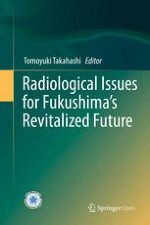7.1 Introduction
7.2 Experimental
7.2.1 Samples
7.2.2 Combustion Test
7.2.3 Measurements
7.3 Results and Discussion
7.3.1 Laboratory-Scale Tests
7.3.2 Development of Decontamination System for Forestry Waste
7.3.3 Demonstration Test of Combustion for Forestry Wastes
Raw materials of combustion | Collected materials after combustion | ||||
|---|---|---|---|---|---|
134Cs + 137Cs | Mass |
134Cs + 137Cs | Mass | ||
Materials | Bq/kg | kg | Materials | Bq/kg | kg |
Pine needlea
| 22,000 | 2.3 | Ash | 440,000 | 0.14 |
Cedar barka
| 10,800 | 1.0 | Soot in waterb
| 290,000 | >0.0015 |
Cedar barkc
| 15,000 | 2.5 | Soot in flued
| 60 | 100 |
Sapwoodc
| 50 | 0.4 | Sewage watere
| 50 | 545 |
